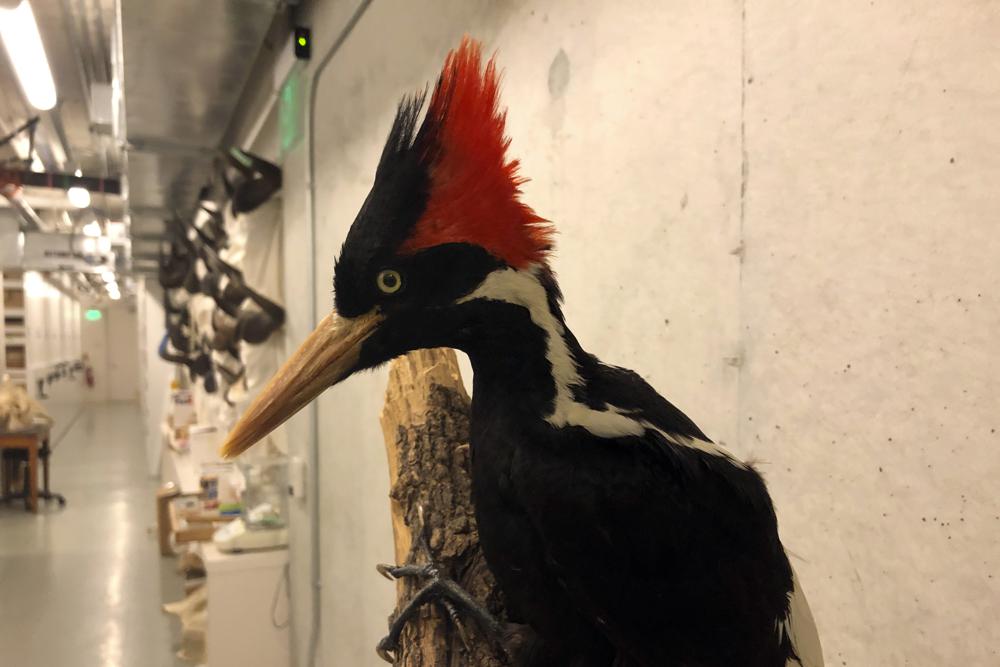A sixth eye
On 20 November 2024, Japan hosted a gathering of senior enlisted members from the Five Eyes intelligence partnership in Tokyo.
It’s a rare move for wildlife officials to give up hope on a plant or animal, but government scientists say they’ve exhausted efforts to find these 23

An ivory-billed woodpecker specimen is on a display at the California Academy of Sciences in San Francisco, Friday, Sept. 24, 2021.
Death’s come knocking the last time for the splendid ivory-billed woodpecker and 22 more birds, fish, and other species: The U.S. government is declaring them extinct.
It’s a rare move for wildlife officials to give up hope on a plant or animal, but government scientists say they’ve exhausted efforts to find these 23. And they warn climate change, on top of other pressures, could make such disappearances more common, as a warming planet adds to the dangers facing imperiled plants and wildlife.
The ivory-billed woodpecker was perhaps the best-known species the U.S. Fish and Wildlife Service on Wednesday will announce is extinct. It went out stubbornly and with fanfare, making unconfirmed appearances in recent decades that ignited a frenzy of ultimately fruitless searches in the swamps of Arkansas, Louisiana, Mississippi, and Florida.
Advertisement
Others such as the flat pigtoe, a freshwater mussel in the southeastern U.S., were identified in the wild only a few times and never seen again, meaning by the time they got a name they were fading from existence.
“When I see one of those really rare ones, it’s always in the back of my mind that I might be the last one to see this animal again,” said Anthony “Andy” Ford, a U.S. Fish and Wildlife Service biologist in Tennessee who specializes in freshwater mussels.
The factors behind the disappearances vary — too much development, water pollution, logging, competition from invasive species, birds killed for feathers, and animals captured by private collectors. In each case, humans were the ultimate cause.
Another thing they share: All 23 were thought to have at least a slim chance of survival when added to the endangered species list beginning in the 1960s. Only 11 species previously have been removed due to extinction in the almost half-century since the Endangered Species Act was signed into law. Wednesday’s announcement kicks off a three-month comment period before the species status changes become final.
Around the globe, some 902 species have been documented as extinct. The actual number is thought to be much higher because some are never formally identified, and many scientists warn the earth is in an “extinction crisis” with flora and fauna now disappearing at 1,000 times the historical rate.
It’s possible one or more of the 23 species included in Wednesday’s announcement could reappear, several scientists said.
A leading figure in the hunt for the ivory-billed woodpecker said it was premature to call off the effort, after millions of dollars spent on searches and habitat preservation efforts.
“Little is gained and much is lost” with an extinction declaration, said Cornell University bird biologist John Fitzpatrick, lead author of a 2005 study that the woodpecker has been rediscovered in eastern Arkansas.
The International Union for Conservation of Nature, a Switzerland-based group that tracks extinctions globally, is not putting the ivory-billed woodpecker into its extinction column because it’s possible the birds still exist in Cuba, said the group’s Craig Hilton-Taylor.
Hilton-Taylor said there can be unintended but damaging consequences if extinction is declared prematurely.
Advertisement